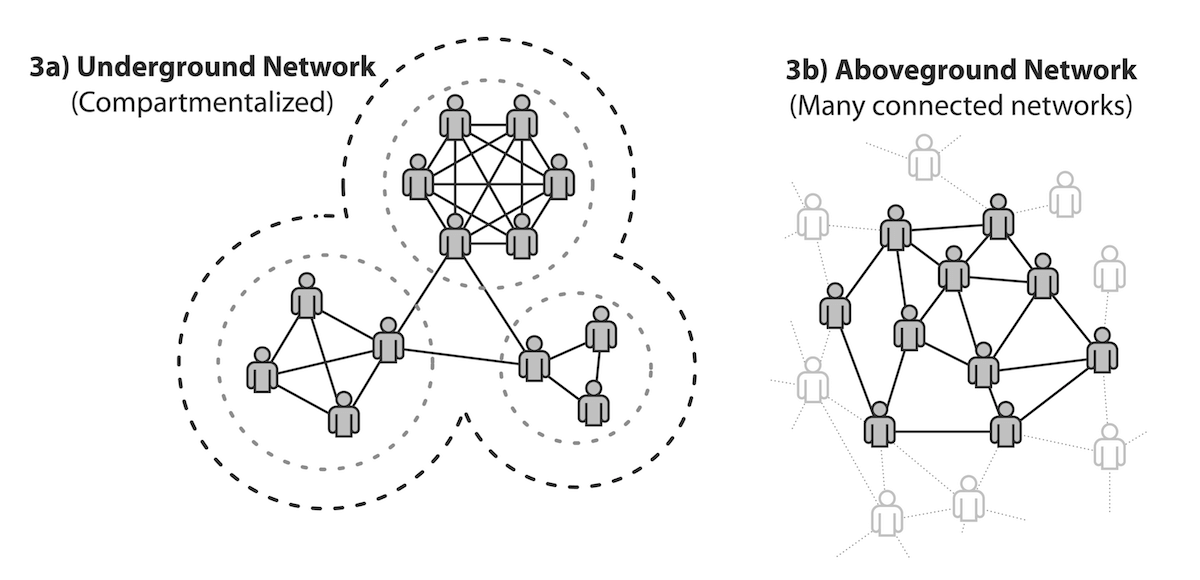Here at Deep Green Resistance, we are an “aboveground” organization with a firewall between us and underground action. That means that our primary work is legal (although this varies depending on national laws). Our members also take part in non-violent direct action of the sort common among aboveground movements.
This is in contrast with “underground” organizations that conduct clandestine, highly illegal activities. We advocate for this, as we think coordinated underground action is the best chance for saving the planet.
We do not plan or carry out underground actions. We do not even know about these activities, except when public communiques (see our underground action calendar for examples) are made. Our role is to be the public organization advocating for and explaining these actions.
The Firewall
We call this separation the firewall between aboveground and underground activities. Maintaining a firewall is essential for security and effectiveness.
Assata Shakur was a member of the Black Panther Party (an aboveground organization) and the Black Liberation Army (an underground organization). She was active in the early 1970s and was eventually arrested. She escaped prison in 1979 and went on the run, eventually reaching Cuba. In 1987 she published the excellent book Assata: An Autobiography, which contains the following quote on the importance of a firewall.
“One of the [Black Panther] party’s major weaknesses was the failure to clearly differentiate between aboveground political struggle and underground, clandestine military struggle. An aboveground political organization can’t wage guerilla war anymore than an underground army can do aboveground political work. Although the two must work together, the must have completely different structures.”
More information on the importance of a firewall and security culture can be found in the Deep Green Resistance book, available here. We will end with a quote from the DGR book.
There has to be a partition, a firewall, between aboveground and underground activities. Some historical aboveground groups have tried to sit on the fence and carry out illegal activities without full separation. Such groups worked in places or times with far less pervasive surveillance than any modern society. Their attempts to combine aboveground and underground characteristics sometimes resulted in their destruction, and severe consequences for their members.
In order to be as safe and effective as possible, every person in a resistance movement must decide for her- or himself whether to be aboveground or underground. It is essential that this decision be made; to attempt to straddle the line is unsafe for everyone.
